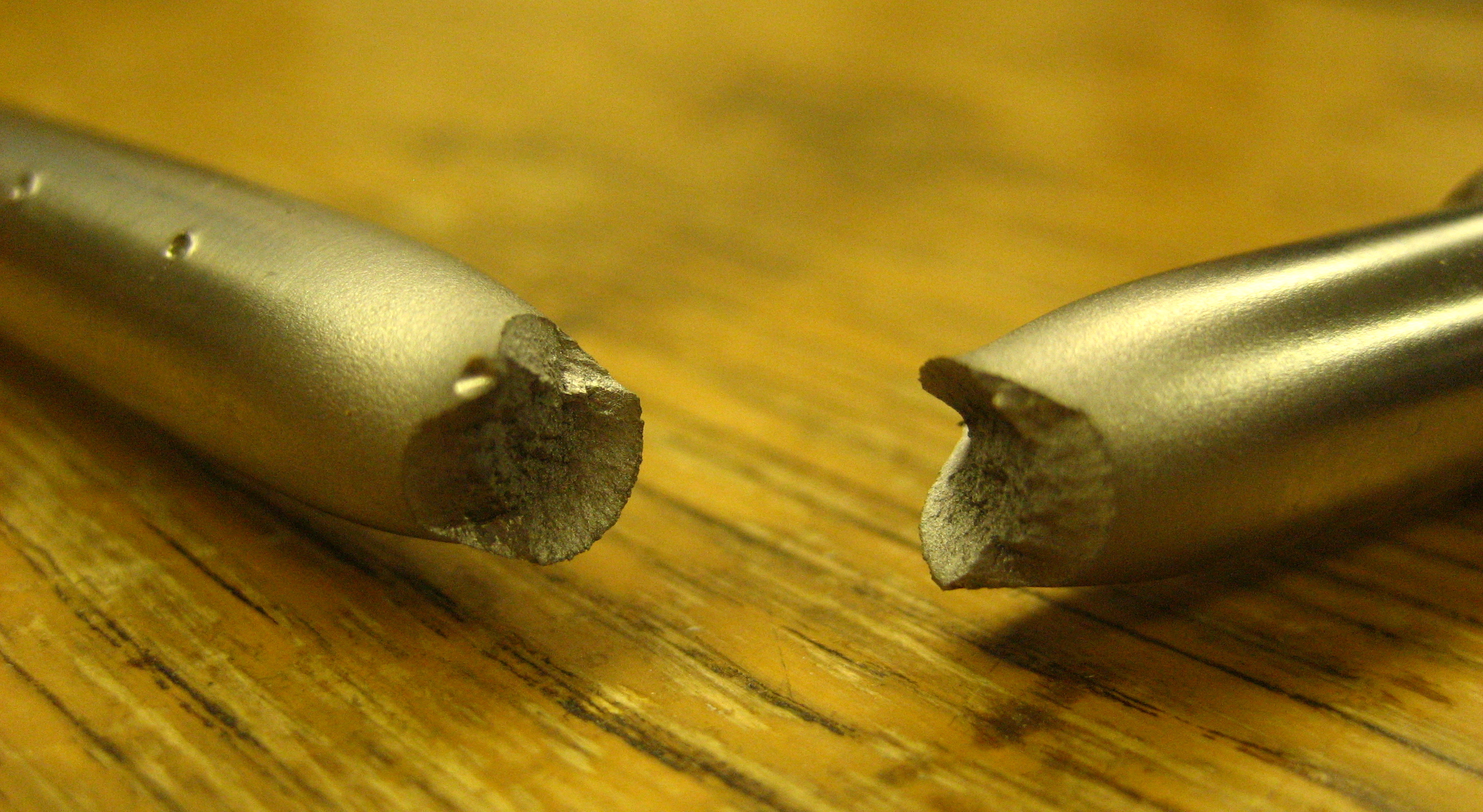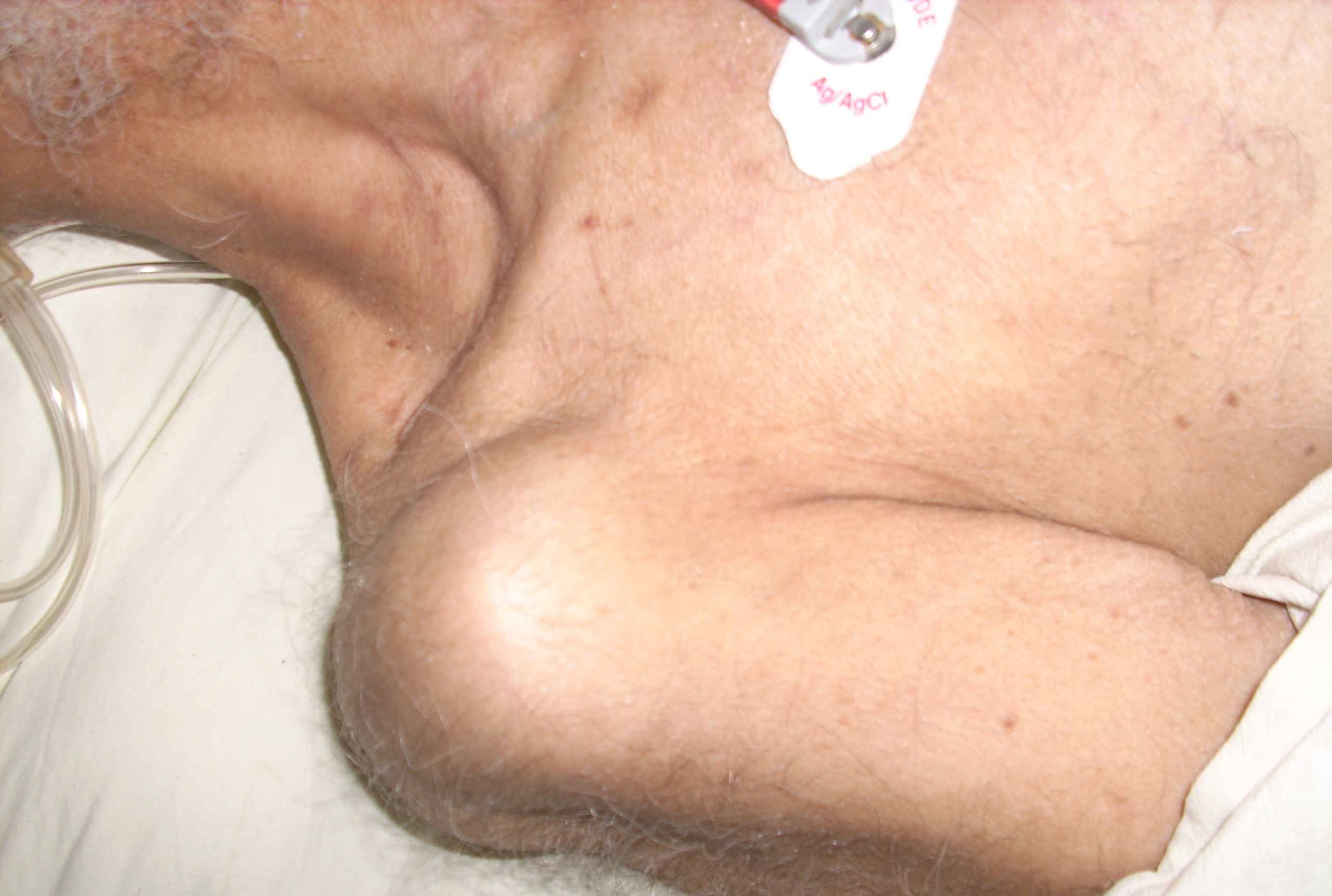|
Injury Of Axillary Nerve
Injury of axillary nerve (axillary neuropathy) is a condition that can be associated with a surgical neck of the humerus fracture. It can also be associated with a dislocated shoulder or with traction injury to the nerve, which may be caused by over-aggressive stretching or blunt trauma that does not result in fracture or dislocation. One form of this injury is referred to as axillary nerve palsy. Injury most commonly occurs proximal to the quadrangular space The quadrangular space, also known as the quadrilateral space (of Velpeau) and the foramen humerotricipitale, is one of the three spaces in the axillary space. The other two spaces are: triangular space and triangular interval. Structure The .... Injury in this nerve causes paralysis (as always) to the muscles innervated by it, most importantly deltoid muscle. This muscle is the main abductor of the shoulder joint from 18 to 90 degrees (from 0 to 18 by supraspinatus). Injury can result in a reduction in shoulder abd ... [...More Info...] [...Related Items...] OR: [Wikipedia] [Google] [Baidu] |
Surgical Neck Of The Humerus
The surgical neck of the humerus is a bony constriction at the proximal end of shaft of humerus. It is situated distal to the greater tubercle and lesser tubercle, and proximal to the deltoid tuberosity. Clinical significance The surgical neck is much more frequently fractured than the anatomical neck of the humerus. This type of fracture takes place when the humerus is forced in one direction while the joint capsule and the rotator cuff muscles remain intact. A fracture in this area is most likely to cause damage to the axillary nerve and posterior circumflex humeral artery. Damage to the axillary nerve affects function of the teres minor and deltoid muscles, resulting in loss of abduction of arm (from 15-90 degrees), weak flexion, extension, and rotation of shoulder as well as loss of sensation of the skin over a small part of the lateral shoulder. Additional images File:Neck-of-Humerus.jpg, The difference between anatomical neck and surgical neck of the humerus File:I ... [...More Info...] [...Related Items...] OR: [Wikipedia] [Google] [Baidu] |
Fracture
Fracture is the appearance of a crack or complete separation of an object or material into two or more pieces under the action of stress (mechanics), stress. The fracture of a solid usually occurs due to the development of certain displacement discontinuity surfaces within the solid. If a displacement develops perpendicular to the surface, it is called a normal tensile crack or simply a crack; if a displacement develops tangentially, it is called a shear crack, slip band, or dislocation. #Brittle, Brittle fractures occur without any apparent deformation before fracture. #Ductile, Ductile fractures occur after visible deformation. Fracture strength, or breaking strength, is the stress when a specimen fails or fractures. The detailed understanding of how a fracture occurs and develops in materials is the object of fracture mechanics. Strength Fracture strength, also known as breaking strength, is the stress at which a specimen structural integrity and failure, fails via fra ... [...More Info...] [...Related Items...] OR: [Wikipedia] [Google] [Baidu] |
Dislocated Shoulder
A dislocated shoulder is a condition in which the head of the humerus is detached from the glenoid fossa. Symptoms include shoulder pain and instability. Complications may include a Bankart lesion, Hill-Sachs lesion, rotator cuff tear, or Injury of axillary nerve, injury to the axillary nerve. A shoulder dislocation often occurs as a result of a fall onto an outstretched arm or onto the shoulder. Diagnosis is typically based on symptoms and confirmed by radiography, X-rays. They are classified as anterior, posterior, inferior, and superior with most being anterior. Treatment is by shoulder reduction which may be accomplished by a number of techniques. These include traction-countertraction, external rotation, scapular manipulation, and the Stimson technique. After reduction X-rays are recommended for verification. The arm may then be placed in a Sling (medicine), sling for a few weeks. Surgery may be recommended in those with recurrent dislocations. Not all patients require ... [...More Info...] [...Related Items...] OR: [Wikipedia] [Google] [Baidu] |
Axillary Nerve Palsy
Axillary nerve palsy is a neurological condition in which the axillary (also called circumflex) nerve has been damaged by shoulder dislocation. It can cause weak deltoid and sensory loss below the shoulder. Since this is a problem with just one nerve, it is a type of Peripheral neuropathy called mononeuropathy. Of all brachial plexus injuries, axillary nerve palsy represents only .3% to 6% of them. Signs and symptoms Axillary nerve palsy patients present themselves with differing symptoms. For instance, some axillary nerve palsy patients complain that they cannot bend their arm at the elbow, however no other pain or discomfort exists. To further complicate diagnosis, onset of palsy can be delayed and may not be noticed until 12-24 hours after the trauma of shoulder region occurred. Symptoms include: * unable to bend arm at the elbow * deficiency of deltoid muscle function * different regions of skin around the deltoid area can lack sensation * unable to raise arm at the shoulder ... [...More Info...] [...Related Items...] OR: [Wikipedia] [Google] [Baidu] |
Quadrangular Space
The quadrangular space, also known as the quadrilateral space (of Velpeau) and the foramen humerotricipitale, is one of the three spaces in the axillary space. The other two spaces are: triangular space and triangular interval. Structure The quadrangular space is one of the three spaces in the axillary space. Boundaries The quadrangular space is defined by: - "Scapular Region: Quadrangular Space of Scapular Region" * ''above/superior:'' teres minor muscle. * ''below/inferior:'' teres major muscle. * ''medially:'' long head of the triceps brachii muscle (lateral margin). * ''laterally:'' surgical neck of the humerus. * ''anteriorly:'' subscapularis muscle. Contents The quadrangular space transmits the axillary nerve, the posterior humeral circumflex artery and the posterior circumflex humeral vein. Clinical significance The quadrangular space is a clinically important anatomic space in the arm as it provides the anterior regions of the axilla a passageway to the poste ... [...More Info...] [...Related Items...] OR: [Wikipedia] [Google] [Baidu] |
J Am Acad Orthop Surg
The American Academy of Orthopaedic Surgeons (AAOS) is an orthopedic organization. Founded at Northwestern University in 1933, as of 2015 AAOS had grown to include about 39,000 members.AAOMembersPage accessed June 27, 2015 The group provides education and practice management services for orthopedic surgeons and allied health professionals. It also lobbies and works on public education. It describes itself as "the world's largest medical association of musculoskeletal specialists." It is a provider of musculoskeletal education to orthopaedic surgeons and others. Its continuing medical education activities include an annual meeting, multiple CME courses held around the country and at the Orthopaedic Learning Center, and various medical and scientific publications and electronic media materials. AAOS Now Monthly nonpeer-reviewed news magazine published by the AAOS. Notable people *Philip D. Wilson Jr. Philip Duncan Wilson Jr. (1920–2016) was an orthopedic surgeon who brought ... [...More Info...] [...Related Items...] OR: [Wikipedia] [Google] [Baidu] |
Abduction (kinesiology)
Motion, the process of movement, is described using specific anatomical terminology, anatomical terms. Motion includes movement of Organ (anatomy), organs, joints, Limb (anatomy), limbs, and specific sections of the body. The terminology used describes this motion according to its direction relative to the anatomical position of the body parts involved. Anatomy, Anatomists and others use a unified set of terms to describe most of the movements, although other, more specialized terms are necessary for describing unique movements such as those of the hands, feet, and eyes. In general, motion is classified according to the anatomical plane it occurs in. ''Flexion'' and ''extension'' are examples of ''angular'' motions, in which two axes of a joint are brought closer together or moved further apart. ''Rotational'' motion may occur at other joints, for example the shoulder, and are described as ''internal'' or ''external''. Other terms, such as ''elevation'' and ''depression'', descri ... [...More Info...] [...Related Items...] OR: [Wikipedia] [Google] [Baidu] |


